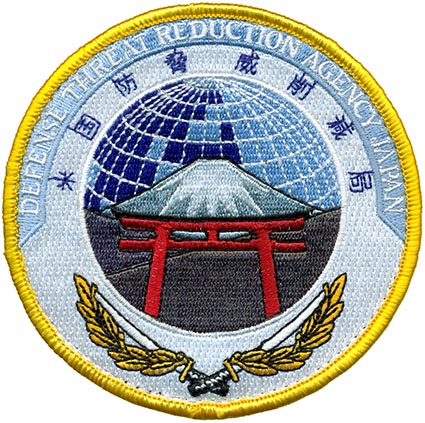Description
Computer made/mounted on velcro 4.0 inch-100mm
DEFENSE THREAT REDUCTION AGENCY – JAPAN
Defense Threat Reduction Agency provides solutions to enable the Department of Defense, the United States Government, and international partners to Deter strategic attack against the United States and its allies; Prevent, reduce, and counter WMD and emerging threats; and Prevail against WMD-armed adversaries in crisis and conflict.
The Defense Threat Reduction Agency (DTRA) traces its roots back to the Manhattan Project in 1942. A mission that began strictly as a weapons development program, expanded during the Cold War and eventually included non-nuclear weapons development nonproliferation efforts. The November 1997 Defense Reform Initiative joined the Defense Special Weapons Agency and the On-Site Inspection Agency with two defense programs: the Cooperative Threat Reduction Program (CTR) and Chemical-Biological Defense Program, Science and Technology component, forming the core elements of the new agency. DTRA was formally established on Oct 1, 1998. Additionally, the Joint Improvised Defeat Organization joined DTRA in Oct 2016 and this department was later merged into DTRA ‘s current Operations Integration Directorate.
DTRA’s rich legacy begins with the Manhattan Engineering District, later referred to simply as the “Manhattan Project,” which was created to develop the world’s first atomic bomb during World War II. Rooted in the success of the TRINITY nuclear test, the first detonation of an implosion-type plutonium device, the Atomic Age was born.
After the end of World War II, the Manhattan Project continued to support atomic weapons testing until the Atomic Energy Act of 1946 split the program into two parts—the Atomic Energy Commission, known today at the Department of Energy (DOE), and the Armed Forces Special Weapons Project (AFSWP). The AFSWP, the military organization responsible for the aspects of the nuclear weapons remaining under military control after the split, was responsible for nuclear weapons maintenance, storage, surveillance, security and transportation as well as conducting offensive and defensive military training in nuclear weapons operations and supporting nuclear tests.
